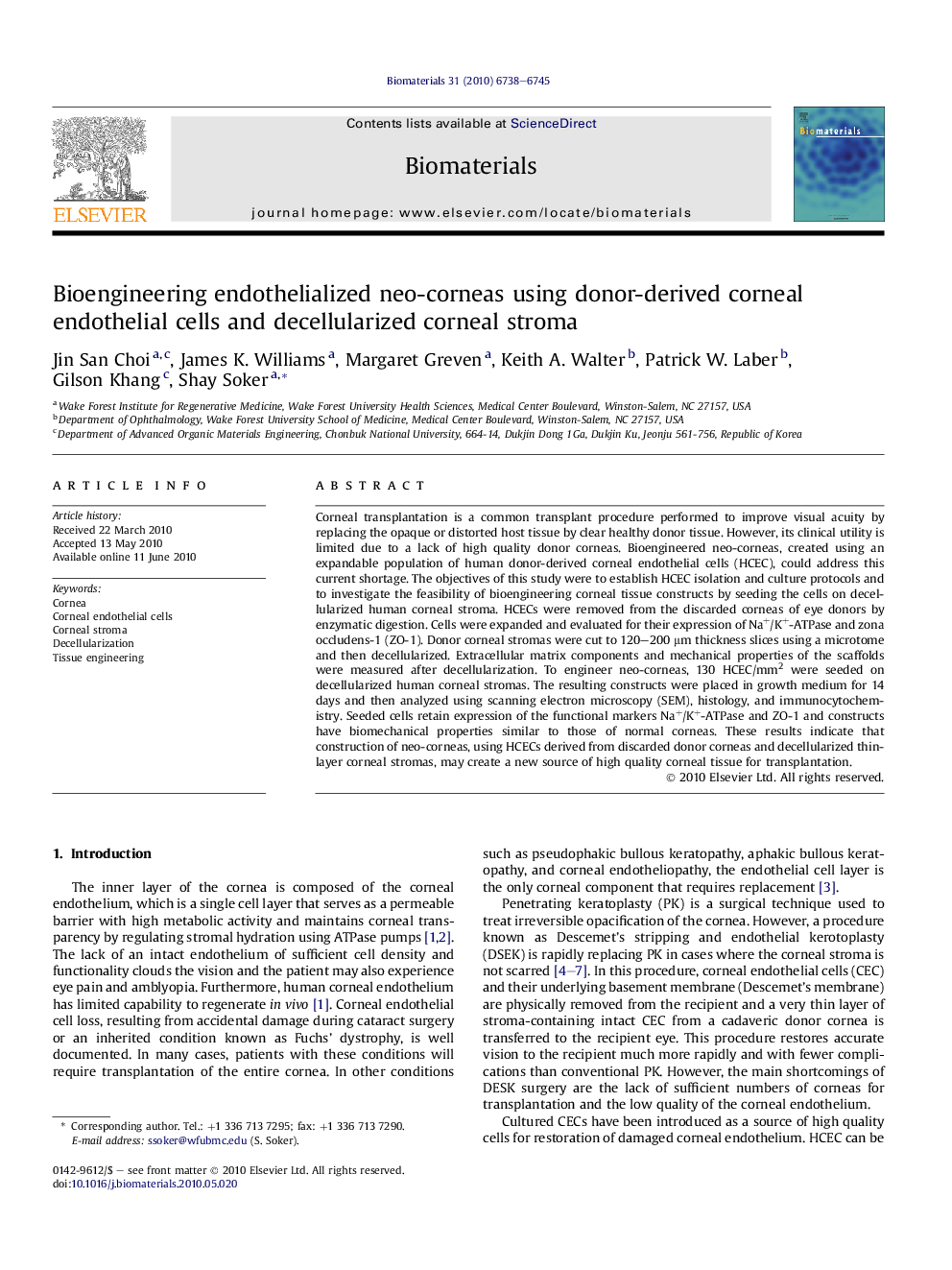| Article ID | Journal | Published Year | Pages | File Type |
|---|---|---|---|---|
| 8709 | Biomaterials | 2010 | 8 Pages |
Corneal transplantation is a common transplant procedure performed to improve visual acuity by replacing the opaque or distorted host tissue by clear healthy donor tissue. However, its clinical utility is limited due to a lack of high quality donor corneas. Bioengineered neo-corneas, created using an expandable population of human donor-derived corneal endothelial cells (HCEC), could address this current shortage. The objectives of this study were to establish HCEC isolation and culture protocols and to investigate the feasibility of bioengineering corneal tissue constructs by seeding the cells on decellularized human corneal stroma. HCECs were removed from the discarded corneas of eye donors by enzymatic digestion. Cells were expanded and evaluated for their expression of Na+/K+-ATPase and zona occludens-1 (ZO-1). Donor corneal stromas were cut to 120–200 μm thickness slices using a microtome and then decellularized. Extracellular matrix components and mechanical properties of the scaffolds were measured after decellularization. To engineer neo-corneas, 130 HCEC/mm2 were seeded on decellularized human corneal stromas. The resulting constructs were placed in growth medium for 14 days and then analyzed using scanning electron microscopy (SEM), histology, and immunocytochemistry. Seeded cells retain expression of the functional markers Na+/K+-ATPase and ZO-1 and constructs have biomechanical properties similar to those of normal corneas. These results indicate that construction of neo-corneas, using HCECs derived from discarded donor corneas and decellularized thin-layer corneal stromas, may create a new source of high quality corneal tissue for transplantation.
